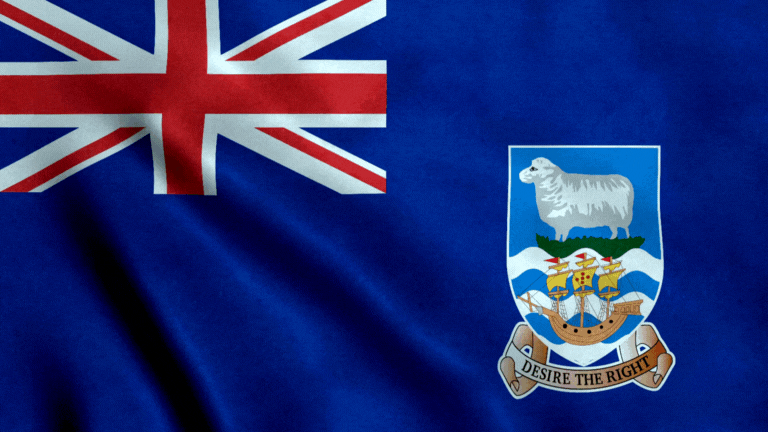Please be aware that this article may contain links to products and services we recommend. If you click on any of these links, we may earn a commission at no extra cost to you. We only endorse products and services that we believe will add value to our readers. Learn more here.
Falkland Islands Flag: History & Symbolism
Hack The Quiz
8/7/20243 min read
This article explores the history and symbolism of the Falkland Islands flag, highlighting the location of the islands in the South Atlantic and explaining how the flag’s design represents the territory's British heritage, local wildlife, and maritime history.
Where are the Falkland Islands?
The Falkland Islands are an archipelago located in the South Atlantic Ocean, approximately 300 miles east of the coast of Argentina. The Falklands are composed of two main islands—East Falkland and West Falkland—along with over 700 smaller islands. The territory is known for its rugged landscape, abundant wildlife, and rich maritime culture.
The Falkland Islands are a British Overseas Territory with a high level of self-governance, but they remain under the sovereignty of the United Kingdom. The Falklands have a distinct cultural identity influenced by both British heritage and the local environment, which is reflected in their flag.
The History of the Falkland Islands Flag
The current flag of the Falkland Islands was officially adopted on September 29, 1948. The flag features the British Blue Ensign, with the Union Jack in the upper left corner and the Falkland Islands coat of arms on the right side.
The coat of arms was granted to the Falkland Islands in 1948 and is a reflection of the islands’ natural and cultural heritage. The emblem includes important symbols that reflect the islanders' reliance on maritime activities, agriculture, and their connection to the United Kingdom.
Breaking Down the Falkland Islands Flag’s Design
The Falkland Islands flag features a British Blue Ensign, with the Union Jack in the top left corner and the territory’s coat of arms on the right side. Each element of the flag carries significant meaning tied to the islands' heritage and natural environment.
Let’s break down the elements of the flag:
The British Blue Ensign
The main field of the flag is blue, representing the Falkland Islands’ status as a British Overseas Territory. The blue background also reflects the importance of the surrounding ocean to the islands, symbolizing the maritime environment that shapes the economy and culture of the Falklands.
The Union Jack
The Union Jack in the upper left corner represents the sovereignty of the United Kingdom over the Falkland Islands. It symbolizes the islanders' loyalty to Britain and their cultural and historical connection to the United Kingdom.
The Coat of Arms
The coat of arms of the Falkland Islands, featured on the right side of the flag, includes several important symbols:
The Shield
The shield features an image of a ram, representing the traditional sheep farming industry, which has been a vital part of the islands’ economy for generations. Below the ram is a sailing ship, symbolizing the Desire, the ship of English sea captain John Davis, who is often credited with the discovery of the Falklands in 1592.
The Grass and Sky
The green field at the bottom of the coat of arms represents the islands' natural vegetation, while the blue sky above symbolizes the beauty of the Falklands' landscapes and environment.
The Motto
Beneath the shield is the motto “Desire the Right”, which reflects the name of the ship as well as the islanders’ determination to pursue their rights, particularly in maintaining their political ties to the United Kingdom.
Final Thoughts
The flag of the Falkland Islands is a distinctive representation of the territory's cultural heritage, economic foundations, and loyalty to the United Kingdom. The blue ensign and Union Jack emphasize the islands' status as a British Overseas Territory, while the coat of arms highlights the islands' economic roots in sheep farming and their maritime history. The inclusion of the sailing ship reflects the historical exploration of the Falklands and the desire for self-determination that remains a core part of the islanders’ identity.
Since its adoption in 1948, the flag has been a symbol of pride and resilience for the people of the Falkland Islands, flown during important events and national celebrations. It stands as a reminder of the islands' journey, their connection to the United Kingdom, and their rich cultural and natural heritage.
Expand your mind ...
Explore trivia that broadens your understanding and knowledge of the world.
WE ARE HERE FOR YOU
JOIN US and hack the quiz
info@hackthequiz.com
© 2024. All rights reserved.



